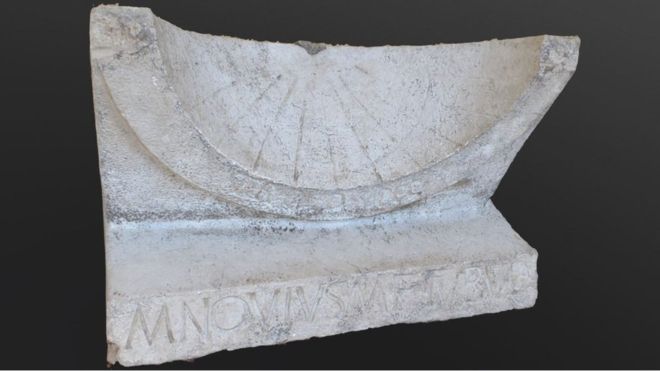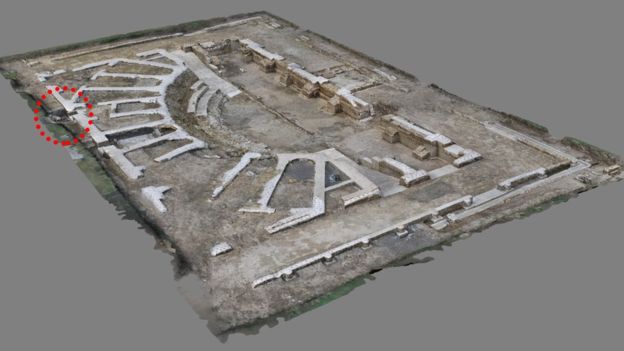2,000-Year-Old Sundial Unearthed in Roman Town

A rare and intact 2,000-year-old Roman sundial was discovered in central Italy, engraved with the name of the man who commissioned it.
Researchers from the University of Cambridge made the find during an excavation in the Roman town of Interamna Lirenas, near Monte Cassino. Inscribed on the sundial is the name Marcus Novius Tubula, an unknown plebeian tribune to Rome, in Latin.
It is claimed this sheds new light on Rome’s relationship with other regions. Interamna Lirenas, founded in 312 BC and abandoned in 6th Century AD, was about 130 km (81 miles) from Rome.

The name and lettering style place the sundial’s inscription at about 1st Century BC when citizens were granted full Roman citizenship.
Dr. Alessandro Launaro, the lecturer at the Faculty of Classics at Cambridge, said the ancient town was “not a town of remarkable prestige or notable influence”.
Therefore, he said, the discovery showed “the level of involvement in Rome’s own affairs that individuals hailing from this and other relatively secondary communities could aspire to”.
The limestone sundial, found in a roofed theatre, is thought to have represented a celebration of Marcus Novius Tubula’s election to the political office of the plebeian tribune.
The concaved face is engraved with 11-hour lines intersecting three-day curves, which indicate the season with respect to the time of the winter solstice, equinox and summer solstice.
The needle which cast a shadow to show the time “is essentially lost” but part is preserved under a lead fixing.
It is believed the sundial was left behind at a time when the theatre and town were being scavenged for building materials during the Medieval to the post-Medieval period.





